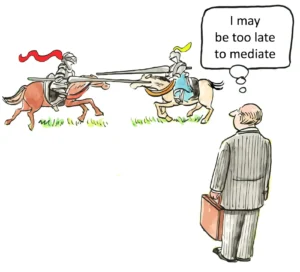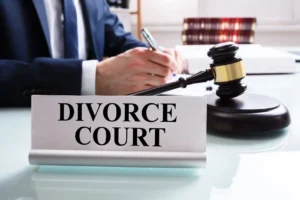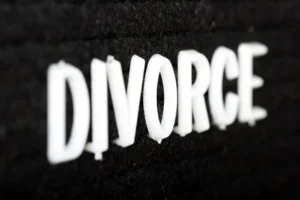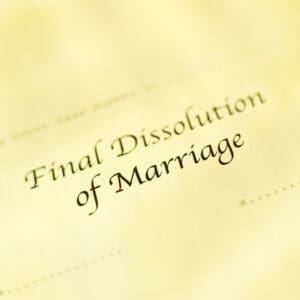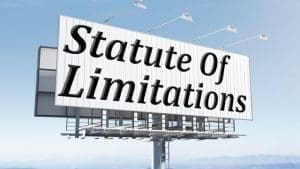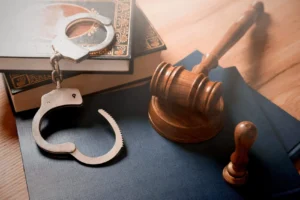Unitary Executive Theory: Legal Implications for Presidential Power Expansion
The unitary executive theory stands as one of the most consequential constitutional doctrines shaping the modern American presidency. At its core, this theory asserts that the President of the United States possesses complete control over the executive branch of government, deriving authority directly from Article II of the Constitution. The theory has profound implications for presidential authority, the separation of powers, and the functioning of administrative agencies that form the backbone of the federal government. As recent developments in the political landscape continue to test the boundaries of executive power, understanding this doctrine becomes increasingly vital for legal scholars, policymakers, and citizens alike.
The unitary executive theory finds its textual foundation in Article II of the Constitution, which begins with the Vesting Clause: “The executive Power shall be vested in a President of the United States of America.” Proponents of the theory interpret this language to mean that all executive power belongs exclusively to the president, not merely some portion of it. This interpretation has significant consequences for how government functions, particularly regarding the president’s ability to control executive agencies, remove officials, and direct policy implementation across the federal government.
Historical Development of the Unitary Executive Theory
The concept of a unitary executive was not always the dominant interpretation of presidential power. During the Constitutional Convention of 1787, the Framers considered various executive structures, including a multi-person executive council, before ultimately deciding on a single president. This decision reflected their desire for energy and accountability in the executive branch, but did not necessarily resolve questions about the scope of presidential control over administration.
Throughout American history, the understanding of executive power has evolved considerably. Early presidents exercised relatively limited authority compared to modern chief executives. The expansion of presidential power began in earnest during the 20th century, particularly with the administrations of Theodore Roosevelt and Woodrow Wilson, who advocated for a more active executive role in governance.
The modern articulation of the unitary executive theory emerged during the Reagan administration in the 1980s. Attorney General Edwin Meese and the Department of Justice’s Office of Legal Counsel developed legal arguments asserting broad presidential control over all executive functions. This interpretation gained further traction during subsequent Republican administrations, particularly under George W. Bush, whose administration relied on expansive views of executive authority in national security matters following the September 11 attacks.
The theory represents a significant departure from the post-Watergate era’s emphasis on checks and balances. After President Nixon’s abuses of power, Congress enacted numerous reforms designed to constrain executive authority, including the creation of independent agencies and inspectors general. The unitary executive theory challenges these constraints as unconstitutional limitations on presidential power.
Constitutional Foundations and Textual Arguments
Advocates of the unitary executive theory ground their arguments in the text and structure of the Constitution. They point to several key provisions in Article II that they believe establish comprehensive presidential control over the executive branch.
The Vesting Clause serves as the primary textual foundation. Unlike Article I, which grants Congress only those legislative powers “herein granted,” Article II vests “the executive Power” in the president without similar limiting language. Unitary executive proponents interpret this difference to mean that the president receives all executive power not explicitly allocated elsewhere in the Constitution.
The Take Care Clause, which requires that the president “take Care that the Laws be faithfully executed,” provides another textual basis for the theory. Supporters argue that this clause not only imposes a duty on the president but also implies the authority necessary to fulfill that duty—including control over all officials who implement federal law.
The Appointments Clause gives the president power to nominate principal officers of the United States, subject to Senate confirmation. Unitary executive theorists contend that this appointment power implies a corresponding removal power, allowing the president to dismiss officials who do not faithfully implement his policies.
Critics of the theory argue that these textual provisions do not support such expansive presidential authority. They note that the Constitution establishes a system of separated powers with checks and balances, not a hierarchical structure with the president at the apex. They also point out that the Framers were deeply concerned about executive tyranny and designed the Constitution specifically to prevent concentration of power.
Supreme Court Jurisprudence on Executive Power
The Supreme Court’s treatment of executive power has evolved significantly over time, with several landmark cases shaping the constitutional understanding of presidential authority and the unitary executive theory.
In Myers v. United States (1926), the Court endorsed a broad view of presidential removal power, holding that the president could remove executive officers without congressional approval. Chief Justice William Howard Taft, writing for the majority, embraced a robust conception of presidential control over the executive branch, arguing that the power to remove officials was essential to the president’s ability to execute the laws.
However, just nine years later in Humphrey’s Executor v. United States (1935), the Court significantly limited the scope of Myers. The Court upheld congressional restrictions on the president’s ability to remove commissioners of the Federal Trade Commission, distinguishing between purely executive officers and those performing “quasi-legislative” or “quasi-judicial” functions. This decision provided the constitutional foundation for independent regulatory agencies that operate with some insulation from direct presidential control.
The tension between these precedents has defined subsequent jurisprudence on executive power. In Morrison v. Olson (1988), the Court upheld the constitutionality of the independent counsel statute, which limited the president’s ability to remove special prosecutors. The Court adopted a functional approach, asking whether the restriction on removal “impermissibly interferes with the President’s exercise of his constitutionally appointed functions.”
More recently, the Court has shown greater receptivity to unitary executive arguments. In Free Enterprise Fund v. Public Company Accounting Oversight Board (2010), the Court struck down a provision creating two layers of for-cause removal protection, finding that it unconstitutionally limited presidential control. Chief Justice Roberts emphasized that the president alone is responsible for the execution of the laws.
This trend continued in Seila Law v. Consumer Financial Protection Bureau (2020), where the Court held unconstitutional the structure of the CFPB, which was headed by a single director removable only for cause. The Court distinguished Humphrey’s Executor, suggesting that independent agencies must be headed by multi-member commissions rather than single directors to be constitutional.
Most recently, in Trump v. United States (2024), the Court expanded presidential immunity from criminal prosecution for official acts, reasoning that the president’s unique constitutional position required substantial protection from judicial interference. This decision has been interpreted by some as further endorsing a robust view of presidential power consistent with unitary executive principles.
Implications for Administrative Agencies and Regulatory Power
The unitary executive theory has profound implications for the structure and functioning of administrative agencies that implement federal law. If fully embraced, the theory would fundamentally transform the regulatory state as it has existed since the New Deal era.
Independent regulatory agencies like the Federal Reserve, Securities and Exchange Commission, and Federal Communications Commission have traditionally operated with significant autonomy from presidential control. Their commissioners or board members typically serve fixed terms and can only be removed for specific causes such as inefficiency, neglect of duty, or malfeasance. This structure was designed to insulate these agencies from political pressure and allow them to develop specialized expertise.
Under the unitary executive theory, however, such independence is constitutionally suspect. If the president possesses all executive power and bears responsibility for faithful execution of the laws, then any restriction on his ability to control those who exercise executive functions—including regulatory authority—violates the Constitution’s allocation of power.
The implications extend beyond removal power to other aspects of agency operations. The theory suggests that the president should have authority to direct the policy decisions of all executive agencies, including those traditionally considered independent. This would include the power to instruct agencies on how to interpret and implement statutes, what enforcement priorities to pursue, and what regulations to issue or rescind.
Such presidential control would significantly alter the regulatory landscape. Agencies would become more responsive to presidential priorities and less insulated from political considerations. This could lead to more dramatic policy shifts between administrations and potentially undermine the stability and predictability that businesses and individuals rely upon in planning their affairs.
Critics argue that this consolidation of power would undermine Congress’s intent in creating independent agencies and disrupt the careful balance of expertise, independence, and accountability that characterizes the modern administrative state. They contend that some degree of agency autonomy serves important values, including the application of specialized knowledge to complex problems and resistance to short-term political pressures.
Separation of Powers and Checks and Balances
The unitary executive theory raises fundamental questions about the proper balance of power among the three branches of government. The Constitution establishes a system of separated powers, with each branch exercising distinct functions and serving as a check on the others. The theory’s implications for this carefully designed structure are significant and contested.
Proponents argue that the unitary executive theory actually reinforces separation of powers by preventing Congress from encroaching on executive functions. By ensuring that the president controls all executive power, the theory maintains clear boundaries between the branches and preserves the constitutional design. They contend that independent agencies and other limitations on presidential control represent an unconstitutional attempt by Congress to exercise executive power or create a “headless fourth branch” of government not contemplated by the Constitution.
Critics counter that the theory undermines the system of checks and balances by concentrating too much power in the presidency. They argue that the Framers deliberately created a complex system with overlapping authorities and mutual constraints to prevent any single branch from becoming dominant. Independent agencies, congressional oversight, and judicial review all serve as essential checks on executive power that the unitary executive theory would weaken or eliminate.
The debate extends to fundamental questions about democratic accountability. Supporters of the theory maintain that presidential control enhances accountability by ensuring that voters can hold a single elected official responsible for the execution of the laws. When authority is dispersed among independent agencies or career civil servants, responsibility becomes diffused and democratic control is weakened.
Opponents respond that accountability requires more than electoral control of the president. They argue that independent agencies, protected civil servants, and congressional oversight provide different forms of accountability that are equally important in a complex democracy. These mechanisms ensure that policy implementation reflects statutory mandates rather than merely presidential preferences, and they protect against abuses of power that might otherwise go unchecked until the next election.
Presidential Removal Power and Its Limits
At the heart of the unitary executive theory lies the president’s power to remove executive officials. This power is not explicitly granted in the Constitution but has been recognized as an essential corollary to the appointment power and the president’s responsibility to execute the laws.
The removal power allows the president to dismiss officials who fail to implement his policies or who he believes are not faithfully executing the laws. Unitary executive theorists argue that this power must be plenary and unrestricted for principal officers of the executive branch. Any limitation on the president’s ability to remove such officials, they contend, unconstitutionally constrains his executive authority and prevents him from fulfilling his constitutional duties.
The Supreme Court’s jurisprudence on removal power has evolved over time. In Myers, the Court recognized a broad presidential removal power for executive officers. Humphrey’s Executor created an exception for officials of independent agencies performing quasi-legislative or quasi-judicial functions. Morrison adopted a functional approach, asking whether removal restrictions impermissibly interfere with the president’s constitutional duties.
Recent cases like Free Enterprise Fund and Seila Law suggest a potential return to a more robust understanding of presidential removal power, though the Court has not yet overruled Humphrey’s Executor or eliminated independent agencies entirely. The Court has, however, imposed new limitations on how such agencies can be structured, particularly regarding single-director agencies and multiple layers of removal protection.
The practical implications of these doctrinal developments are significant. If the Court continues to strengthen presidential removal power, many existing agencies may need to be restructured to comply with constitutional requirements. Officials who previously enjoyed independence might become subject to presidential removal, potentially altering their decision-making and enforcement priorities.
Critics worry that unrestricted removal power could undermine the expertise and independence that characterize effective regulation. They argue that some insulation from political pressure is necessary for agencies to make decisions based on facts and law rather than partisan considerations. They also note that Congress often creates independent agencies precisely to address problems that require long-term solutions transcending electoral cycles.
Executive Orders and Unilateral Presidential Action
Executive orders represent one of the most direct manifestations of presidential power. These written directives allow presidents to manage executive branch operations and implement policies without congressional action. The unitary executive theory has significant implications for the scope and limits of this form of unilateral presidential action.
Under the theory, executive orders derive their authority from the president’s constitutional position as head of the executive branch. As the sole repository of executive power, the president can direct subordinates through binding orders that carry the force of law within the executive branch. This understanding supports broad presidential discretion in issuing such directives.
However, executive orders remain subject to important constraints. They cannot contravene valid statutes passed by Congress, as the president’s duty to faithfully execute the laws requires compliance with legislative mandates. They also cannot exceed the president’s constitutional authority by infringing on powers reserved to Congress or the judiciary.
The unitary executive theory potentially expands the permissible scope of executive orders in several ways. First, it supports presidential authority to direct how executive agencies interpret and implement ambiguous statutes, potentially displacing agency discretion with presidential policy preferences. Second, it strengthens the president’s hand in areas of shared authority with Congress, such as foreign affairs and national security. Third, it may justify orders that reorganize executive agencies or reallocate resources within the executive branch.
Recent administrations have increasingly relied on executive orders to advance policy goals, particularly when faced with congressional gridlock. This trend raises concerns about the concentration of power in the presidency and the potential circumvention of the legislative process. Critics argue that extensive use of executive orders to make policy undermines democratic accountability and the separation of powers.
Proponents of robust presidential power counter that executive orders provide necessary flexibility in governance and allow the president to fulfill his constitutional responsibilities. They note that such orders remain subject to judicial review and congressional override, preserving the system of checks and balances.
Foreign Affairs and National Security Powers
The unitary executive theory has particularly significant implications in the domains of foreign affairs and national security, areas where presidents have traditionally exercised substantial discretion. The theory reinforces and potentially expands this presidential primacy.
Article II designates the president as Commander in Chief of the armed forces and grants authority to make treaties and appoint ambassadors (with Senate advice and consent). Unitary executive theorists interpret these provisions, combined with the Vesting Clause, to establish comprehensive presidential control over foreign relations and national defense.
This interpretation supports broad presidential authority to conduct diplomacy, negotiate international agreements, deploy military forces, and collect intelligence without substantial congressional involvement or constraint. It also justifies executive privilege claims to withhold national security information from Congress and the courts.
The Supreme Court has often deferred to presidential authority in these domains. In United States v. Curtiss-Wright Export Corp. (1936), Justice Sutherland described the president as the “sole organ of the federal government in the field of international relations.” More recently, courts have shown considerable deference to presidential determinations regarding military operations, intelligence activities, and national security threats.
The unitary executive theory potentially extends this authority further by limiting congressional and judicial checks on presidential national security actions. If the president possesses plenary control over the executive branch and primary responsibility for national defense, then congressional attempts to regulate the conduct of foreign affairs or military operations may impermissibly intrude on executive prerogatives.
Critics argue that this concentration of power threatens constitutional checks and balances in precisely the area where restraint is most needed. They note that the Constitution explicitly grants Congress significant authority in foreign affairs and national security, including powers to declare war, regulate foreign commerce, and establish rules for the armed forces. They contend that shared responsibility in these domains serves crucial democratic values and prevents dangerous concentrations of power.
The tension between presidential authority and congressional prerogatives in foreign affairs remains unresolved. The unitary executive theory provides a framework that generally favors presidential discretion, but the Constitution’s text and structure suggest a more complex allocation of authority that requires inter-branch cooperation and mutual restraint.
Contemporary Debates and Political Implications
The unitary executive theory has moved from an abstract constitutional doctrine to a central element in contemporary political and legal debates. Recent administrations have invoked the theory to justify expansive assertions of presidential power, generating significant controversy and litigation.
During the George W. Bush administration, legal advisors relied on unitary executive principles to support broad presidential authority in the war on terror, including enhanced interrogation techniques, warrantless surveillance, and military detention of enemy combatants. These claims provoked intense debate about the limits of presidential power in national security matters.
The Obama administration initially criticized some of these assertions but ultimately embraced robust views of executive authority in areas such as targeted killings, executive privilege, and regulatory action. This continuity across administrations of different parties suggests that the institutional incentives of the presidency often favor expansive interpretations of executive power regardless of partisan affiliation.
The Trump administration advanced particularly aggressive versions of the unitary executive theory. President Trump claimed “absolute immunity” from investigation while in office, asserted authority to withhold congressionally appropriated funds, and argued for unrestricted power to fire officials throughout the executive branch. These claims resulted in numerous court challenges and constitutional confrontations with Congress.
The current political landscape continues to be shaped by debates over the proper scope of presidential power. Supporters of a strong presidency argue that effective governance in a complex world requires energetic executive leadership unhampered by excessive constraints. They contend that the president’s democratic mandate and accountability to the entire electorate justify substantial discretion in implementing policy.
Critics warn that excessive concentration of power in the presidency threatens democratic values and constitutional governance. They argue that the Framers deliberately created a system of separated powers precisely to prevent any single branch from accumulating too much authority. They point to historical examples of presidential overreach and abuse as cautionary tales about the dangers of an unchecked executive.
These debates transcend partisan lines, though they often manifest in partisan contexts. The same political actors who advocate for presidential power when their party controls the White House frequently become champions of congressional prerogatives and judicial checks when the opposition holds the presidency. This inconsistency reflects the inherent tension between institutional interests and partisan objectives in American politics.
Judicial Deference and Executive Interpretation
The unitary executive theory has significant implications for how courts review executive branch actions and interpretations of law. If the president possesses comprehensive control over the executive branch, this suggests that courts should defer to executive interpretations of statutes and constitutional provisions affecting presidential power.
The doctrine of judicial deference to executive interpretations has evolved through cases like Chevron U.S.A., Inc. v. Natural Resources Defense Council (1984), which established that courts should defer to reasonable agency interpretations of ambiguous statutes. The unitary executive theory potentially strengthens this deference by suggesting that such interpretations ultimately reflect presidential authority rather than merely agency expertise.
Proponents argue that such deference respects separation of powers by preventing judicial encroachment on executive functions. They contend that the president’s democratic accountability and constitutional responsibility to execute the laws justify substantial judicial restraint when reviewing executive actions.
Critics respond that excessive deference undermines the judiciary’s essential role in ensuring that the executive branch acts within legal boundaries. They argue that independent judicial review serves as a crucial check on presidential power and protects individual rights and congressional prerogatives from executive overreach.
The Supreme Court has shown signs of reconsidering aspects of administrative deference doctrines in recent years. Cases like Kisor v. Wilkie (2019) have narrowed the scope of deference to agency interpretations of their own regulations, while some justices have called for reconsidering Chevron entirely. These developments could potentially limit executive discretion and strengthen judicial review of administrative action.
However, the Court has simultaneously shown considerable deference to presidential claims of authority in areas like national security and foreign affairs. This selective deference creates a complex landscape where executive power faces varying levels of judicial scrutiny depending on the subject matter and constitutional provisions at issue.
The tension between judicial review and executive discretion remains unresolved. The unitary executive theory suggests a vision of governance where presidential interpretations receive substantial deference, particularly in areas of core executive responsibility. This vision challenges traditional understandings of the judiciary’s role in constraining executive power and ensuring legal compliance.
Future Directions and Constitutional Evolution
The unitary executive theory continues to evolve through judicial decisions, scholarly debate, and political practice. Its future development will shape the American constitutional system and the balance of power among the branches of government.
Several potential trajectories are possible. The Supreme Court could continue its recent trend of strengthening presidential control over the executive branch, potentially overruling or further limiting Humphrey’s Executor and eliminating independent agencies in their current form. Alternatively, the Court might reaffirm the constitutionality of some constraints on presidential power, preserving a role for independent agencies while perhaps imposing new limitations on their structure or authority.
Congressional responses will also influence the theory’s development. Congress could attempt to reassert its authority through more specific statutory mandates, stronger oversight mechanisms, or new institutional innovations designed to check presidential power while respecting constitutional boundaries. The effectiveness of such measures would depend on political will and judicial receptivity.
Presidential practice will continue to shape constitutional understandings through precedent and institutional development. How presidents exercise their authority, the justifications they offer, and the public and institutional responses they generate all contribute to evolving norms about the proper scope of executive power.
The broader political context matters as well. Public concerns about effective governance, democratic accountability, and the dangers of concentrated power will influence both institutional behavior and constitutional interpretation. Periods of crisis or perceived governmental dysfunction often generate pressure for stronger executive leadership, while scandals or abuses of power typically prompt calls for greater constraints.
The unitary executive theory represents one vision of presidential power within the constitutional system. Its continued influence depends on its persuasiveness to judges, elected officials, and the public as a framework for understanding the presidency’s proper role. Competing visions emphasizing checks and balances, congressional primacy, or judicial supremacy will continue to challenge and shape the theory’s development.
Conclusion
The unitary executive theory presents a powerful vision of presidential authority grounded in constitutional text and structure. Its implications for separation of powers, administrative governance, and democratic accountability are profound and contested. As the theory continues to influence judicial decisions and political practice, it shapes the fundamental character of American constitutional government.
The tension between presidential power and constitutional constraints remains unresolved. The Constitution creates a complex system of separated powers with overlapping authorities and mutual checks. The unitary executive theory offers one interpretation of this system that emphasizes presidential control and accountability. It envisions a presidency with comprehensive authority over all executive functions, capable of directing policy implementation and ensuring faithful execution of the laws without interference from Congress or independent agencies. While this vision has gained increasing judicial support in recent years, it remains in tension with competing constitutional values of checks and balances, separation of powers, and democratic accountability through multiple institutions.
As the Supreme Court continues to address cases involving presidential power, and as presidents assert increasingly expansive claims of authority, the debate over the unitary executive theory will remain central to American constitutional governance. The resolution of this debate will shape not only the formal allocation of power among the branches but also the practical functioning of democracy in a complex modern society. The theory’s ultimate legacy depends on how courts, Congress, presidents, and the public balance the competing values of energy and restraint in executive power that have defined American constitutionalism since its founding.
Citations:
- https://www.theregreview.org/2025/03/03/shane-the-unbearable-lightness-of-the-unitary-executive-theory/
- https://www.law.cornell.edu/wex/unitary_executive_theory_(uet)
- https://www.acslaw.org/expertforum/the-specter-of-dictatorship-and-the-supreme-courts-embrace-of-the-unitary-executive-theory/
- https://www.npr.org/2025/03/12/nx-s1-5308280/trump-is-trying-to-remake-the-presidency-heres-why
- https://www.bakermckenzie.com/en/insight/publications/2025/03/new-executive-orders-independent-federal-regulatory-agencies
- https://azpbs.org/horizon/2025/02/unitary-executive-theory-us-government/
- https://www.cato.org/blog/expansion-executive-power-overview
- https://www.csmonitor.com/USA/Justice/2025/0219/supreme-court-trump-executive-power-doge
- https://www.acslaw.org/inbrief/a-unitary-executive-on-steroids-threatens-to-crush-the-constitution/
- https://www.theusconstitution.org/news/did-the-supreme-court-already-accept-donald-trumps-autocratic-vision-of-the-presidency-trump-thinks-so/
- https://www.journals.uchicago.edu/doi/full/10.1086/714860
- https://www.carltonfields.com/insights/publications/2025/eo-making-so-called-independent-agencies-directly-responsive-to-the-president-is-another-nail
- https://www.democracydocket.com/analysis/what-is-unitary-executive-theory-how-is-trump-using-it-to-push-his-agenda/
- https://www.educationnext.org/unitary-executive-theory-101-what-it-means-for-education/
- https://www.annenbergclassroom.org/glossary_term/unitary-executive-theory/
- https://scholarship.law.upenn.edu/cgi/viewcontent.cgi?article=1124&context=jcl
- https://repository.uclawsf.edu/hastings_law_journal/vol72/iss1/1/
- https://www.brennancenter.org/our-work/analysis-opinion/extreme-legal-theory-behind-trumps-first-month-office
- https://markrozell.gmu.edu/wp-content/uploads/2011/11/Rozell_and_Sollenberger_UE_and_Bush_Legacy_Chapter_2013.pdf
- https://abcnews.go.com/Politics/trump-unitary-executive-presidential-power-theory-driving-2nd/story?id=118481290
- https://www.reuters.com/legal/unitary-executive-theory-may-reach-supreme-court-trump-wields-sweeping-power-2025-02-14/
- https://www.whitehouse.gov/presidential-actions/2025/02/implementing-the-presidents-department-of-government-efficiency-workforce-optimization-initiative/
- https://apnews.com/article/trump-presidential-power-executive-congress-grants-freeze-60fa3a9fabf6328f9aa3c45ed34e2cc3
- https://news.bloomberglaw.com/daily-labor-report/trump-agency-firing-cases-march-toward-receptive-supreme-court
- https://www.npr.org/2025/02/19/nx-s1-5302481/trump-independent-agencies
- https://www.youtube.com/watch?v=2yad8iVoZBg
- https://www.nytimes.com/2023/07/17/us/politics/trump-plans-2025.html
- https://6abc.com/president-trump-not-a-king-federal-judge-labor-board-member-reinstated/15985588/
- https://www.nytimes.com/2025/02/26/opinion/trump-roberts-unitary-executive-theory.html
- https://www.whitehouse.gov/presidential-actions/2025/01/unleashing-american-energy/
- https://hls.harvard.edu/today/presidential-power-surges/
- https://www.americanprogress.org/article/project-2025-would-destroy-the-u-s-system-of-checks-and-balances-and-create-an-imperial-presidency/
- https://en.wikipedia.org/wiki/Unitary_executive_theory
- https://www.khanacademy.org/humanities/us-government-and-civics/us-gov-interactions-among-branches/us-gov-expansion-of-presidential-power/a/lesson-summary-expansion-of-presidential-power
- https://www.aclu.org/news/civil-liberties/how-trumps-proposed-radical-expansion-of-executive-power-will-impact-our-freedoms
- https://www.hks.harvard.edu/faculty-research/policy-topics/democracy-governance/are-we-headed-constitutional-crisis-kennedy
- https://www.brennancenter.org/issues/bolster-checks-balances/executive-power
- https://review.law.stanford.edu/wp-content/uploads/sites/3/2021/01/Birk-73-Stan.-L.-Rev.-175.pdf
- https://www.bbc.com/news/articles/c977njnvq2do
- https://slate.com/news-and-politics/2025/01/trump-project-2025-underway-executive-orders.html
- https://www.uclawsf.edu/2025/02/28/experts-examine-legal-limits-of-trumps-sweeping-executive-orders/






